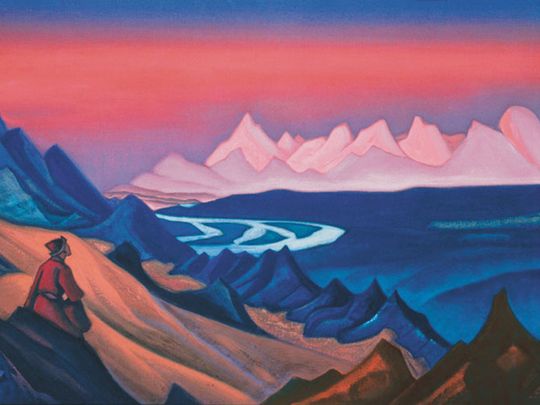
In the depths of the ocean, the legend goes, lies the lost city of Atlantis. But do you know of another elusive city, up in the clouds, surrounded by mountain peaks? It’s the land of Shambala.
Click start to play today’s Crossword, where we dive into ‘Tibetan’ legends and hunt for this lost place.
In 1933, English writer James Hilton wrote a fictional account of the legendary Tibetan sanctuary of Shambala (which in Sanskrit, translates to ‘place of peace’). His book, Lost Horizon, refers to it with a different name, however: Shangri-La. Cut off from the world, this Tibetan haven is thought to be located in the Himalayas, in the remotest part of Tibet, on a high plateau, surrounded by a ring of mountain peaks. It’s one of the most ancient myths from the region, and has inspired countless stories.
The Europeans heard about the legend in the 1580s, according to US-based broadcasting network, PBS (Public Broadcasting Service). Travellers from Europe who were present at the court of Mughal emperor Akbar, in India, heard of the strange, wonderful tales.
First recorded in India in 962AD, Buddhist texts spoke of a land in the Himalayas, full of peace and harmony, where an isolated group of people – those who had the purest hearts and had achieved enlightenment – lived and prepared for a day when the entire world would be ready to live in peace. According to the texts, this elusive kingdom was located in the shadow of a white crystal mountain, and could only be approached through a ring of peaks. Next to the mountain, was said to be a lake and a palace, where humanity’s wisdom was conserved, ready to save the world when the time came.
In the modern era, some Buddhist scholars have concluded that Shambala is located in the Dhauladhar Mountains, around McLeod Ganj in the higher reaches of the Himalayas. Some say its entrance is hidden inside a remote, abandoned monestary in Tibet, and is guarded by beings known as the Shambala guardians.
This ancient Tibetan legend finds its way into many other cultures. Hindus know Shambala as Aryavartha (or ‘The Land of the Worthy Ones’), the Chinese know it as Hsi Tien, and to Russian Old Believers, it is known as Belovoyde.
As elusive as it appears to be, the idea of Shambala is said to have outer, inner, and alternative meanings. The outer meaning considers Shambala to exist as a physical place, although only individuals with the appropriate karma can reach it and experience it as such. Another interpretation of it correlates Shambala to one’s own body and mind (inner), and to meditative practice (alternative).
The Dalai Lama said, of the Shambala, according to the PBS report: “Nowadays, no one knows where Shambala is. Although it is said to exist, people cannot see it, or communicate with it in an ordinary way. Some people say it is located in another world, others that it is an ideal land, a place of the imagination. Some say it was a real place, which cannot now be found. Some believe there are openings into that world which may be accessed from this. Whatever the truth of that, the search for Shambala traditionally begins as an outer journey that becomes a journey of inner exploration and discovery.”
What do you think of this ancient myth? Play today’s Crossword and tell us at games@gulfnews.com.





